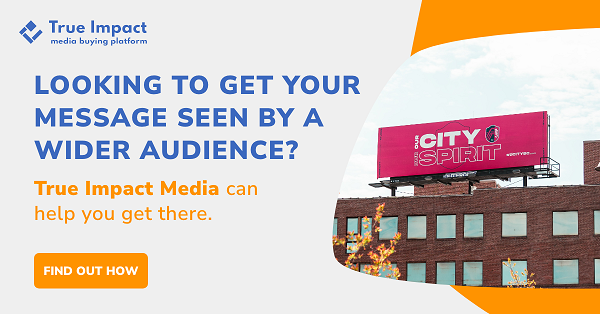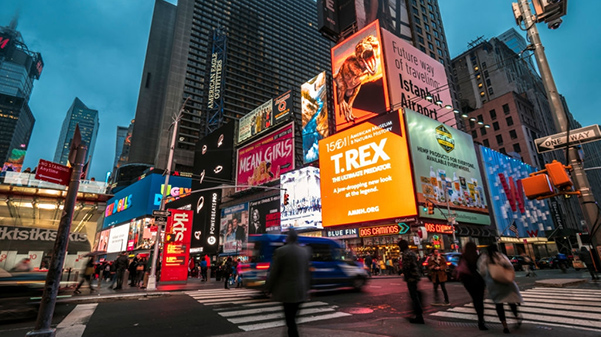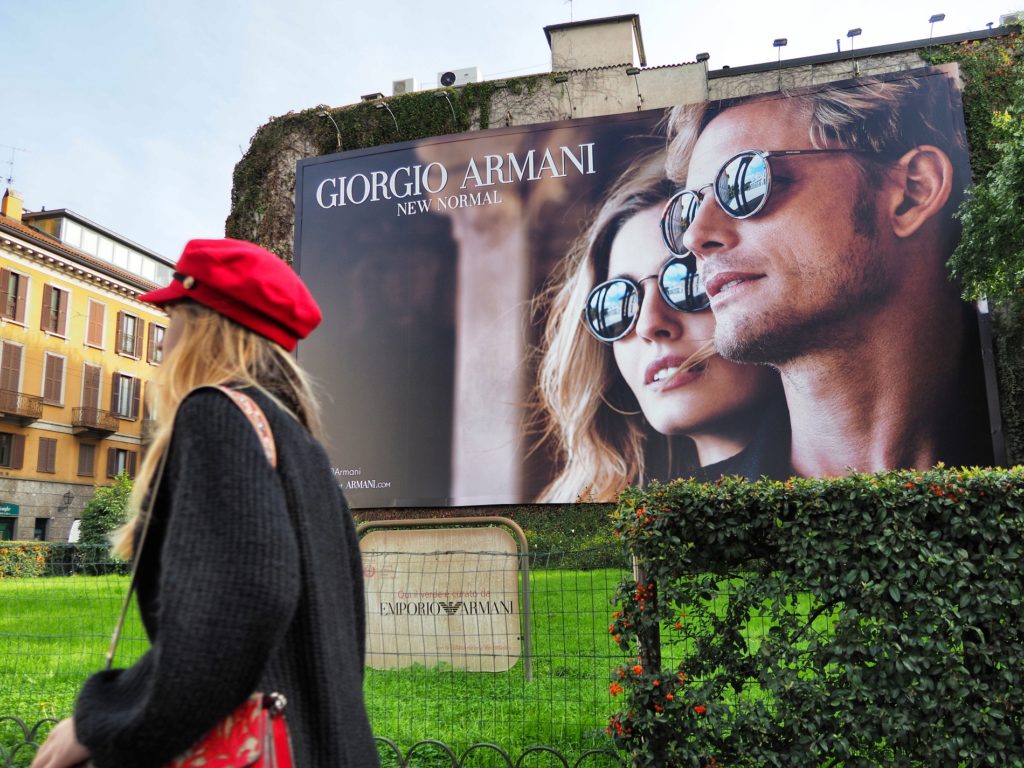We often hear the debate of which is better for marketing, billboards, or social media. The answer is that it depends on your specific campaign and what you are trying to achieve.
For decades, McDonald’s in the United States has stood at the forefront of innovative out-of-home advertising (OOH). From highly recognizable static billboards that have become iconic highway fixtures to interactive and digital billboard ads that are reshaping the field, Ronald McDonald and Co. are leaders when it comes to cunning, creative, and effective marketing.
But what makes McDonald’s outdoor advertising so compelling—and so successful?
What sets the Golden Arches apart from its competitors is the company’s unique combination of creative innovation, marketing savvy, and tech prowess when it comes to cutting-edge advertising techniques. Wondering how to get in on McDonald’s pioneer advertising model? This guide explores some of the ways McDonald’s advertising thinks outside of the OOH box.
What is Outdoor Advertising Strategy?
Outdoor or OOH advertising refers to any kind of advertising you encounter outside of the home ads could be political billboards or restaurant ads. It doesn’t matter if that’s a traditional bulletin or traditional billboard ad or something more advanced, like a video that plays at the pump while you’re filling your gas tank—OOH advertising aims to reach consumers on the go.
That means that OOH advertising encompasses an enormous range of advertising formats, techniques, and mediums. Just a few of the most common billboard 101examples of OOH advertising include:
- Billboards
- Bus shelter advertisements
- Subway advertisements
- Wallscapes
- Street furniture
Place-based media like mall kiosks, elevator ads, and ads in places like movie theaters and football stadiums are all further examples of OOH advertising. Companies of all sizes and kinds rely on OOH advertising to increase their brand awareness and draw consumers to their business.
Large restaurant chains, however, seem to be shaping the way OOH advertising is utilized to directly target consumers in a highly visible and engaging way that ushers hungry customers to their doors.
How McDonald’s Uses Technology in OOH Advertising
Although OOH advertising is basically as old as advertising itself, technological innovations have helped it remain a fresh and vital advertising method. From time-tested options like bulletins and street signs to digital spectaculars and experiential ads, savvy advertisers have used technology to breathe new life into old methods and even develop entirely new ones.
And few companies have been as cunning in their use of these innovations as McDonald’s. As a company, they’ve made a habit of embracing modernization to reinvigorate their advertising strategies and increase their profits.
WAZE Partnership
McDonald’s 2018 partnership with WAZE, a GPS navigation app, is an excellent example of how the company uses technology in OOH advertising. By capitalizing on GPS software, McDonald’s was able to combine cutting-edge technology with a timeless classic of advertising: the billboard ad.
By partnering with WAZE, McDonald’s was able to combine classic OOH advertising billboards with in-app and location-based marketing techniques to target consumers on the road. Here’s how they did it:
- Geofencing – Geofencing refers to the practice of using mobile apps or other software in conjunction with GPS, RFID, WiFi, or cellular technologies to instigate a pre-ordained ad whenever a mobile device navigates within a preset boundary.
- Smart billboards – In the case of McDonald’s and WAZE, the technology was used to link the WAZE app with over 300 McDonald’s billboards in Southern California.
- Take-over advertisements – Whenever a traveler using the WAZE app passed a geo-fenced McDonald’s billboard, a “take-over advertisement” would appear in-app. These ads featured the same promotion as the traditional billboard and provided a call to action to the consumer.
- Directional guidance – Once the ad appears, travelers have the option of getting directions from the app to the nearest McDonald’s location, usually within only a couple of miles.
McDonald’s partnership with WAZE turned out to be a good idea. By capitalizing on the advertising opportunities offered by GPS navigation, smartphones, and other innovations, McDonald’s reportedly earned over 6 million mobile ad impressions and more than 8,000 in-app actions.
Old-fashioned Ingenuity
McDonald’s doesn’t simply tap into technology and let the gadgets do all the work. Even as technology makes new advertising methods possible every day, the company remains committed to using old-fashioned methods that let its advertising acumen shine.
Creative Billboards
It’s not possible to mention all of the ways that McDonald’s has proven itself with creative and unique advertising. From celebrity endorsements to catchy jingles you can’t get out of your head, the examples are abundant. Here are just a few fast food chain examples:
- Sundial billboard – Recently, McDonald’s transformed a series of billboards into sundials that instructed consumers on the best time of day to eat various breakfast menu items. The fast food chain billboards were placed in precise locations so that they could serve as functional sundials.
- Border battles – At the border between Norway and Sweden, McDonald’s erected billboards that specified which country had a less expensive menu.
- Directional ads – Sometimes, McDonald’s billboards don’t advertise much more than the nearest location. Billboards with directions like “next exit” or “on your right” coax consumers to the next McDonald’s drive-thru.
“Walk-thru” Billboards in London
Another sterling example of McDonald’s continued advertising savvy is the “walk-thru” billboards the company installed in certain London neighborhoods in the summer of 2021. These walk-thru fast food giant billboards combined classic McDonald’s advertising with the speed and convenience of a food truck, allowing customers to purchase a McFlurry at the billboard itself.
This creative use of advertising was effective for many reasons, including:
- It offered instant gratification – By making their fast food giant ad and their store one entity, these ads made it easy for consumers to act on their impulses as soon as they realized they wanted a McFlurry.
- It was timely – The burger chain campaign played to COVID-era concerns about social distancing and the dangers of going inside—without directly mentioning the pandemic.
- It was in line with the company’s strategy – Because it addressed the pandemic in a positive and solution-driven way, the campaign was in line with the brand’s current campaign, “Fancy a McDonald’s,” which sought to highlight the good times that can be had over a Big Mac and fries.
Mass Personalization
The purpose of OOH advertising is to reach as many people as possible. This means that they have to be specific enough to be engaging but general enough to appeal to a mass audience. It’s a tricky balance to strike, but a recent campaign in Canada is an excellent example of how McDonald’s succeeds at mass personalization in their advertising.
The billboards in question referenced the cultural tradition of Moving Day, a sort of unofficial holiday in Quebec. The ads featured open moving trucks stuffed with home items that were colored and arranged to evoke classic McDonald’s menu items like a Big Mac and fries.
But the ads didn’t stop at just reaching all residents of Quebec. Each individual ad was specific enough in its details to suggest a certain kind of person was moving—a large family, a young couple, and a single person.
Brand Familiarity
When you’re as recognizable a brand as McDonald’s sometimes all it takes is the power of suggestion. From its iconic golden arches to the signature red of its French fry boxes, consumers are well-versed in the visual codes that indicate the brand.
Over the years, McDonald’s has been particularly adept at using that brand familiarity in creative advertising that plays to consumers’ pre-existing knowledge. A key example of this is their cunning use of logo-less advertising.
In locations from Puerto Rico to Paris, McDonald’s is known for minimalist advertising that’s akin to whispering into the consumer’s ear. Here are a few examples:
- Take a bite – In Paris, McDonald’s released a series of out-of-home ads that featured its most famous menu items with bites taken out of the ads themselves. The ads contained zero branding.
- Blurred lines – In Puerto Rico, McDonald’s released OOH ads that featured iconic menu items that were blurred nearly to the point of being unrecognizable—although they weren’t—highlighting McDonald’s distinct mark on the world.
- Ingredients only – Another campaign featured sparse billboards that simply listed the ingredients of certain menu items, with familiar colors acting as the only branding.
By playing to what the consumer already knows about the company, McDonald’s is able to use the power of suggestion in some truly interesting and creative ad designs.
True Impact Media Simplifies OOH
You have a lot of options when it comes to OOH advertising. From traditional options like bulletins, posters, and billboards, to street furniture, transit media, and place-based media, there’s an advertising solution out there for all companies and brands.
But knowing the solution that’s right for you—and finding the location that will give you the best return on your investment—is a tricky business. Wouldn’t it be nice if there was someone there to help you?
There is: True Impact Media.
We believe OOH is an effective tool for helping businesses and brands reach consumers no matter where those consumers are located. And we’re committed to making it easier than ever for you to launch the OOH campaign that’s right for your brand.
Our platform brings the world of OOH right to your fingertips with:
- Listings for millions of outdoor advertising spaces
- An online, interactive inventory map
- Powerful and flexible tools to help you plan your campaign
- Detailed analytics to give you insight into how your campaign is performing
Plus, our dedicated team of advertisers and technologists are here to help you every step of the way.
When it comes to launching your OOH campaign, the time is now. Work with True Impact Media today.
Sources:
- Marketingdive.com. McDonald’s Drives 8.4k in-app Actions by Tying Geofenced Billboards to WAZE. https://www.marketingdive.com/news/mcdonalds-drives-84k-in-app-actions-by-tying-geofenced-billboards-to-waze/549980/
- Cio.com. What is Geofencing? Putting Location to Work. https://www.cio.com/article/288810/geofencing-explained.html
- Billboardconnection.com. McDonald’s Billboards: Ingenious, Teasing, and Effective. https://billboardconnection.com/article/mcdonalds-billboards-ingenious-teasing-and-effective/
- Movia.media. Fast Food OOH Advertising. https://movia.media/moving-billboard-blog/fast-food-ooh-advertising-then-vs-now/
- Thedrum.com. McDonald’s pioneers even faster food with a ‘walk-thru’ billboard. https://www.thedrum.com/news/2021/08/20/mcdonald-s-pioneers-even-faster-food-with-walk-thru-billboard
- Adweek.com. These Clever McDonald’s Ads Have Chunks Bitten Out of Them. https://www.adweek.com/agencies/these-clever-mcdonalds-outdoor-ads-have-giant-bites-taken-out-of-them/
- Rapportww.com. McDonald’s Uses Blurry Billboards in New Advertisements. https://rapportww.com/uk/news/mcdonalds-use-power-suggestion-blurry-big-mac-billboards/
- Adweek.com. No Logo. No Images. But You’ll Know What These Ads Are For. https://www.adweek.com/creativity/no-logo-no-images-but-you-know-exactly-who-these-ads-are-for/




